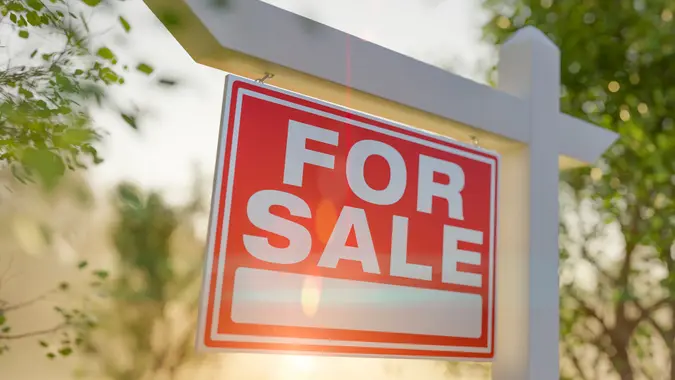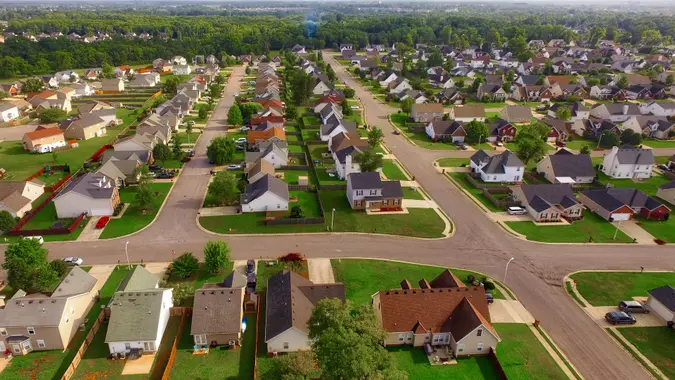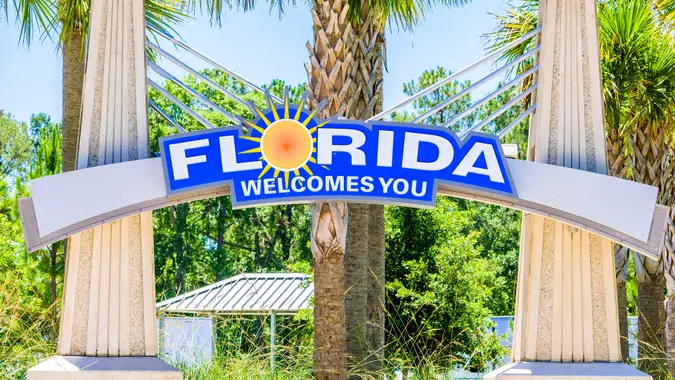5 Key Signs Your Home Will Drop In Value in 2024

Commitment to Our Readers
GOBankingRates' editorial team is committed to bringing you unbiased reviews and information. We use data-driven methodologies to evaluate financial products and services - our reviews and ratings are not influenced by advertisers. You can read more about our editorial guidelines and our products and services review methodology.

20 Years
Helping You Live Richer

Reviewed
by Experts

Trusted by
Millions of Readers
It can be difficult to predict the future value of your home. However, certain indicators could signal a potential decline in property value.
Remaining aware of these signs can help you prepare for your home’s market value changes. Here are some of the key factors that could indicate a decrease in property value in the coming year.
1. Economic Downturns and Local Job Markets
One of the top indicators of a potential drop in home values is the state of the local and national economy. Economic downturns often lead to decreased consumer spending power and increased unemployment rates.
When job security is threatened, fewer people are able to buy homes. Those looking to sell may find fewer buyers, leading to a decrease in home values.
A specific local job market downturn can also have a significant impact. If major employers in an area are downsizing or relocating, the demand for homes in that area is likely to decrease. This reduction in demand can lead to lower home values, as sellers may have to accept lower offers to attract buyers.
2. Oversupply of Homes
Another sign that your home’s value might decrease is an oversupply of housing in your area. When there are more homes for sale than there are buyers, sellers often find themselves in a competitive market where they need to lower their prices to stand out.
This situation can be exacerbated by the construction of new homes that exceed the demand. Developers continuing to build in areas where there’s already an oversupply can flood the market, further driving down property values.
3. Changes in Neighborhood Appeal
The appeal of your neighborhood plays an important role in your home’s value. Changes that negatively affect this appeal can lead to a drop in property values. This can include increasing crime rates, closing local amenities such as schools, parks, and stores, or introducing undesirable facilities like factories or waste management plants. A decline in the overall upkeep of the neighborhood, such as unkempt properties or increased litter, can also detract from its appeal.
4. Rising Interest Rates
Interest rates set by central banks can significantly influence the real estate market. Higher interest rates mean higher mortgage costs for buyers, which can reduce the number of people who can afford to buy a home.
Demand decreases when fewer buyers are in the market, and sellers may be forced to lower their prices to attract interest. Watching trends in interest rate changes can provide insight into potential future movements in home values.
5. Environmental Factors
Environmental factors can also signal a potential decrease in home value. This includes an increased risk of natural disasters such as floods, wildfires, or hurricanes, particularly in areas where such events are becoming more common due to climate change. Also, issues like air and water pollution can make an area less desirable to live in, leading to a decrease in demand for homes in affected areas.
Bottom Line
While no one can predict the future with absolute certainty, being aware of these indicators can help homeowners understand potential risks to their property’s value. If you notice any of these signs in your area, it may be wise to consider how they could impact your home’s market value. Whether you’re planning to sell your home soon or simply keeping an eye on your investment, staying informed can help you make better decisions and potentially mitigate losses.
Editor's note: This article was produced via automated technology and then fine-tuned and verified for accuracy by a member of GOBankingRates' editorial team.
 Written by
Written by 

























